Are you in the market for a new dryer but don’t know where to start looking?
Take a number! Believe it or not, shopping for a new dryer makes many homeowners nervous. If this were about a food processor, you probably wouldn’t be as stressed, but considering that a dryer is a decade-long investment (at least), it’s only natural that you feel overwhelmed.
Dryers are not what I’d call cheap, so making sure you hit the mark when you finally decide to buy one is crucial. It’s estimated that the global dryer market size will reach $25.1B by 2030, which means that there are thousands of competitors out there trying to convince their product is right for you.
But is it? Maybe.
But before you make a decision, you need information to be sure. With over 7 years of experience covering dryers and other appliances, I’ve seen my fair share of issues with the wrong purchases, including costly repairs. Dryers, for example, cost anywhere between $100-450 to fix.
I know it all seems like a lot, but don’t worry; you came to the right place for answers.
Below, I’ve prepared a comprehensive guide that will aid you in the decision-making process so you can sleep at night knowing that your dryer will yield fresh clothes every time.
Ready? Let’s dive right in!
Dryer Types
Dryer types are essential before actually going over the features, efficiency, and all other aspects there are to know about the topic. By being familiarized with the wide range of options out there, it’ll be easier for you to double down on a specific model when the time comes.
Vented Dryers
Vented Dryers are the most common out there; you probably have one in your home as you read this article. Vented dryers work with either gas or electricity to raise the temperature of a component called a heating element, which dries your clothes, pushing the humidity in them upwards to be collected by aluminum vents and sent elsewhere.
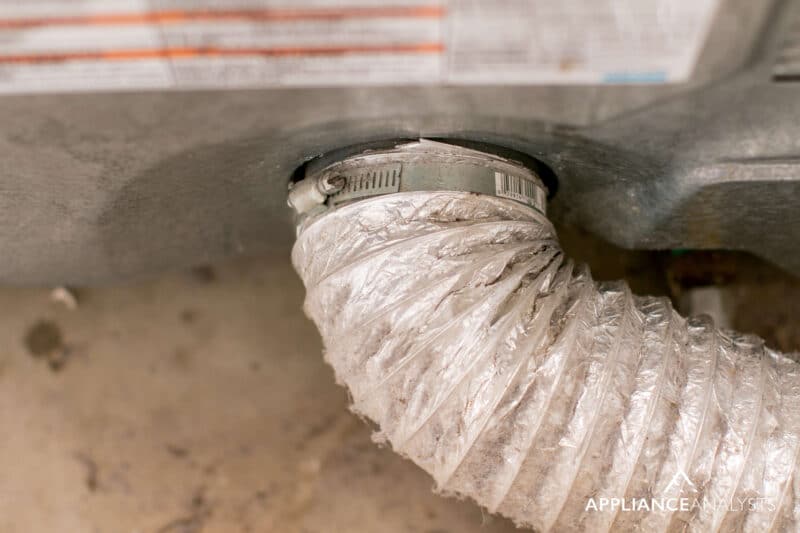
Vented dryers are great for medium-sized families looking for an affordable appliance, as you can find them in the $400-800 range. In my opinion, vented dryers are not too hard to maintain, although the vents do need to be cleaned now and then to maximize results.
Ventless Dryers
Ventless Dryers do not require aluminum vents or ducts to get rid of the humidity removed from your clothes. Instead, ventless dryers contain the heat and moisture inside themselves. Ventless dryers are typically more efficient than their vented counterparts and are gentler with clothes.
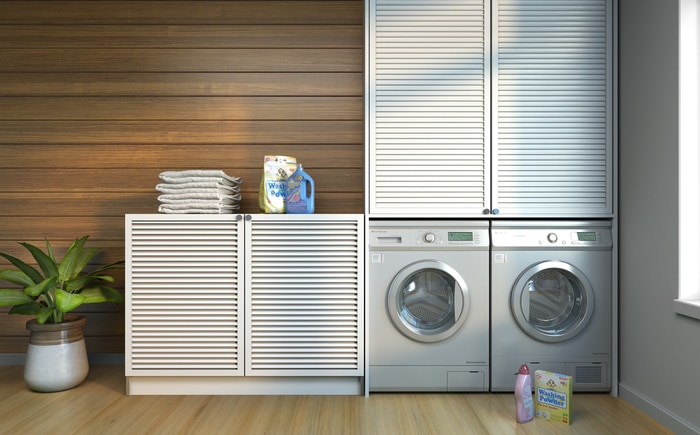
While ventless dryers cost less to run, they also typically take longer to dry your clothes when compared to vented alternatives. Moreover, since ventless dryers don’t need any ducts to dissipate excess moisture, they’re also more expensive, ranging between $800-1,500.
Ventless Dryers are great for reduced spaces, like apartments, where installing exhaust vents and ducts is not always an option.
Condenser Dryers
Like their vented counterparts, condenser dryers also use a heating element to heat up the incoming air and then pass it through a condenser unit that cools it down.
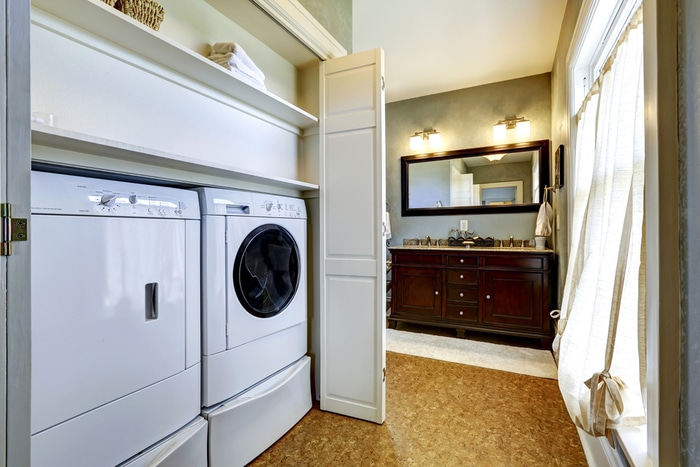
Condenser units are also more energy-efficient than vented alternatives and usually offer a wider range of options and drying programs. However, the added efficiency comes at a price, as condenser dryers also require higher maintenance levels, and you’ll occasionally have to deal with and repair the condenser unit to ensure maximum efficiency.
Condenser dryers are great for people looking for lower running costs and a convenient way of disposing of excess moisture from their clothes. From what I’ve seen, if you’re interested in a condenser dryer, you’ll have to pay between $800-1,500, depending on load capacity, features, and brand.
Heat Pump Dryers
Heat Pump Dryers are the most efficient type out of the entire lot, and it’s all thanks to how they work on drying your clothes. Heat Pump Dryers use a closed-loop heat exchange system based on coils and refrigerant.
Heat Pump Dryers operate in a continuous cycle where hot air passes through the drum, removes excess moisture, and then passes through a condenser coil, which deposits the water into a tank.
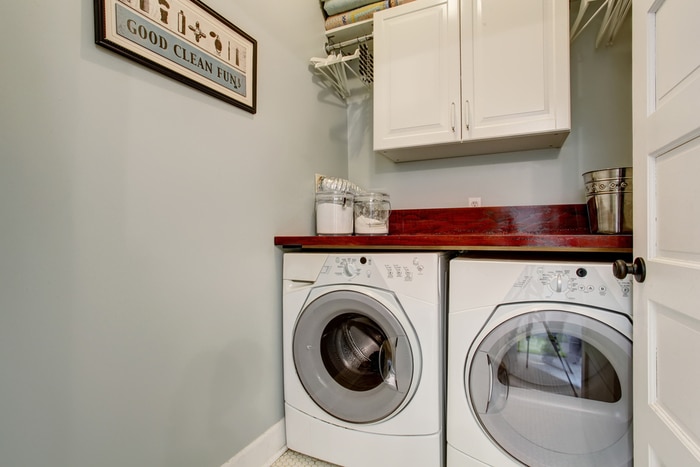
Heat Pump Dryers are great for people who want to dry their clothes for the lowest amount of power consumption possible while also ensuring the drying process is gentle.
The downside is that Heat Pump dryers aren’t cheap, as they start at around $1,000 and can go all the way up to $2,000 or more.
Combo Dryers
Combo Dryers are one of the best examples of versatility in this dryer buyer’s guide. Combo Dryers are great for people living in smaller homes, as their all-in-one vertical layout saves a lot of space and can fit almost anywhere.
Combo Dryers can solve many issues but also create a lot more. Combo Dryers typically take longer to dry clothes than other alternatives, have smaller load capacity than other options, and are among the most expensive types to repair, as a single failure can affect both the washer and the dryer.
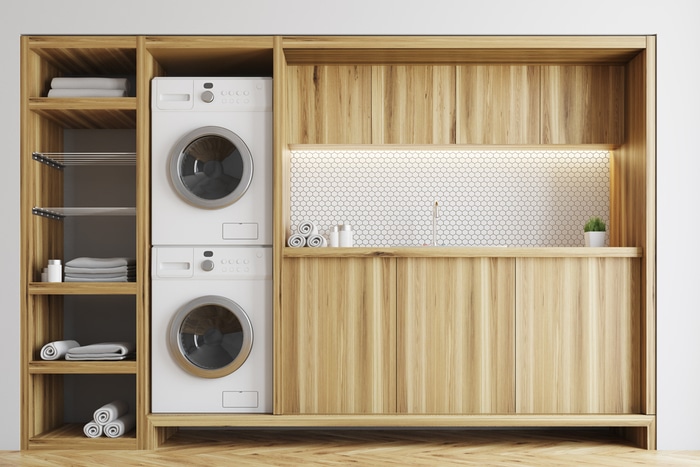
Combo Dryers are also not cheap, as the average unit will cost you anywhere between $1,000-1,500 or more if you’re looking for premium models. I wouldn’t recommend Combo Dryers units unless you’re struggling for space in your laundry room.
Portable Dryers
Portable dryers are the last variant I want to discuss in this dryer buyer’s guide.
Portable dryers aren’t meant for larger families or heavy loads, as they have small capacities and tend to take longer than other models to dry your clothes properly. Moreover, Portable Dryers are not very energy efficient, so you might end up using more power with them than you would with other alternatives.
I recommend Portable Dryers for people on a tight budget that live alone, dry small laundry loads, and want as much independence as possible to wash their clothes and free up space in their laundry rooms. Portable Dryers typically go for anywhere between $150-500, depending on the specific make and model.
Dryer Buying Considerations
Having covered and briefly explained the different dryer types and how each one might meet your needs, let’s now move on to looking at some important considerations you must take into account before buying a new one.
#1 Price
Price is often the first thing that comes to people’s minds when embarking on the journey of buying a new dryer or looking into a dryer buyer’s guide.
And in this economy, who can blame them?
According to what we covered earlier in this dryer buyer’s guide, Portable dryers are the most affordable from the lot, followed by standard vented units. However, price isn’t the only thing you should look at, as the cost of running the appliance must also be considered. We’ll touch more on that further down.
Here’s a small table to give you a clearer perspective of each dryer model and its price:
| Dryer Type | Low-End Cost | Average Cost | High-End Cost |
| Vented | $400 | $600 | $800 or more |
| Ventless | $800 | $1,150 | $1,500 or more |
| Condenser | $800 | $1,200 | $1,500 or more |
| Heat-Pump | $1,000 | $1,500 | $2,000 or more |
| Combo | $1,000 | $1,250 | $1,500 or more |
| Portable | $150 | $325 | $500 |
#2 Load Capacity
Load capacity can be the make or break of how useful your dryer will be for the years to come. You wouldn’t believe how many people find themselves requiring additional space for their clothes daily.
When looking to buy a new dryer, my usual recommendation is to consider the number of people you live with, as this will greatly determine the appliance you have to choose.
I know that browsing freely through the dryer catalog isn’t always possible, as space and budget are often constraints, especially in smaller apartments. But even in such cases, there’s almost always a good chance you can hit the space-load capacity sweet spot if you play your cards right.
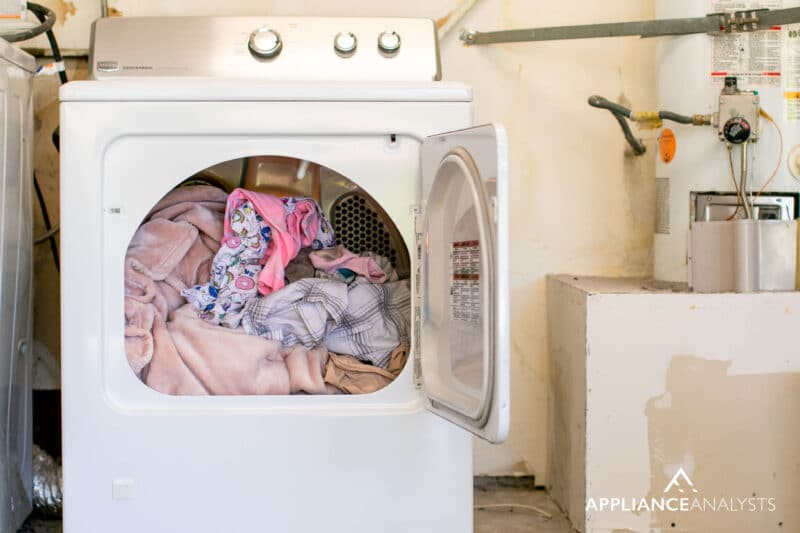
In most countries, there are 3 universal dryer capacities – Compact, Standard, and Large. To give you a clearer idea of which one you need, please analyze the following table carefully:
| Dryer Capacity | Compartment Size (in cubic ft.) | Ideal For |
| Compact | 2.5-3.5 | 1–2 people |
| Standard | 5-7 | 3–4 people |
| Large | 8-9 | +5 people |
Some people might need to make adjustments depending on what they’re trying to dry. For example, if you live with 2-3 other people but frequently wash large comforters and duvets, you might want to go for a Large capacity dryer over the Standard one.
#3 Form Factor
Form factor is also a very important aspect of the dryer purchasing process that many people frequently overlook. You’d be forgiven for thinking that both Top-load and Front-load dryers are the same in every aspect except their design, but this is actually not the case.
Both dryer form factors differ in many areas:
| Front-load | Top-load |
| More energy-efficient | Cheaper |
| Fewer water consumption | Shorter drying cycles |
| Gentler with fabrics | Laundry is easier to place and remove due to the top lid |
As opposed to Top-load dryers, Front-load units can be stacked on top of a front load washer, which can save you a lot of horizontal space, and provide the same benefits as a combo type.
#4 Energy Efficiency
Energy efficiency is another critical piece of the puzzle in this dryer buyer’s guide, as it represents what I like to call parallel costs. When looking into buying a new dryer, it’s a grave mistake to only look at its price tag, as you should also consider how much you’ll be paying monthly to run it.
Dryers can be mainly powered by gas or electricity, so you’ll likely find any model you like in either configuration. That said, regardless of which dryer you choose, it’s recommended that you look for a machine that delivers great results while using as few resources as possible.
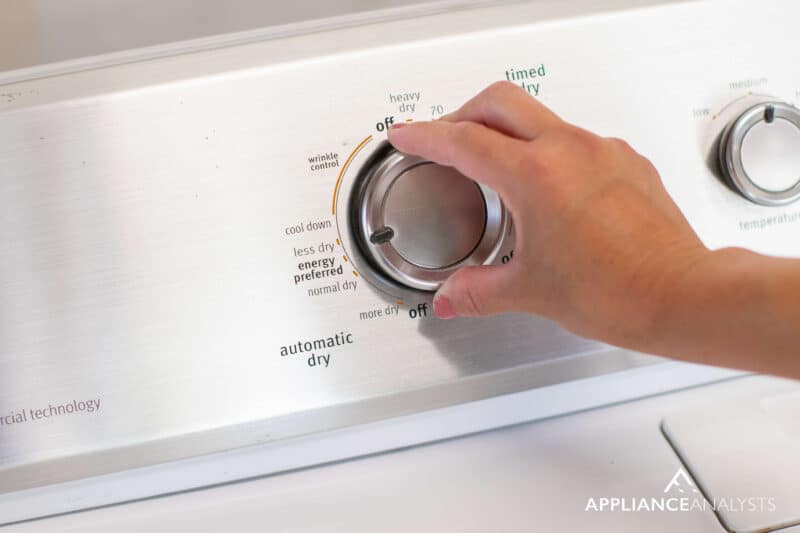
A standard electric dryer uses between 1,800-5,000 watts per hour or 1.8-5 kWh. The average price per kWh in America for the current year is $0.1524, which roughly translates into 27–76 cents per hour to use your appliance.
The hourly cost might not seem like much, but everything changes when you look at the cost per year. Buying a dryer that meets your needs and is highly efficient could save you over $100 every year!
Now, don’t worry; the best and most energy-efficient models have already been preselected for you through what is known as the “Energy Star Rating” certification. When an appliance has an Energy Star Rating, it’s designed to work while using the least amount of power possible.
If you’re looking to save on utilities every month, look for an Energy Star certification before purchasing your new dryer.
#5 Customer Reviews
When shopping for a new dryer, you can get the ultimate truth by visiting your favorite online marketplaces and reading what people say. After all, there’s no one more honest than a disgruntled customer.

Doing your own research and taking into account all the elements mentioned in this dryer buyer’s guide can go a long way in making the right decision. Considering all angles can be the difference between investing in something you’ll use and love for at least a decade and being stuck with a machine that’s constantly leaking water.
I recommend going to a large marketplace like Amazon, looking up the dryer you’re interested in, and reading the 20 best and worst reviews available. A good sign is when the appliance you’re looking into has a 5-star review percentage of 80% or above.
#6 Drying Programs
Drying programs are to a dryer what bedrooms and bathrooms are to a house – the more you have, the better.
Having as many options as you can get is always welcome, especially considering that new fabrics are incorporated into the fashion world every other year.
And even if you’re not into dressing according to the latest trends, certain sheets and comforters also require special treatment, so drying them at home is a great advantage.
However, you might not need a dryer that offers tens of programs. Most households with no special requirements can usually get away with the basics.
To help you determine which programs you might need, here are the most common ones:
- Regular: The typical drying cycle we all know and love.
- Delicate: The dryer uses low heat and gentle tumbling to protect delicate garments and avoid tearing holes in them.
- Permanent Press: Ideal for all types of garments. The Permanent Press program uses medium heat while drying and then pulls in air at room temperature at the end of the cycle to decrease wrinkling.
- Quick Dry: Ideal for smaller loads that must be dried out quickly.
- Time Dry: Great for garments and items with specific drying recommendations. All you have to do is set the desired cycle time manually.
- Air Fluff: A cycle that works with air at room temperature. Ideal for sheets or pillowcases that need a breath of fresh air. Since there’s no hot air, using garments that are already dry is recommended.
- Steam Cycle: A growing trend in newer models. Great for freshening up your clothes and removing wrinkles. Not to be used with wet clothes, as the cycle will not dry them.
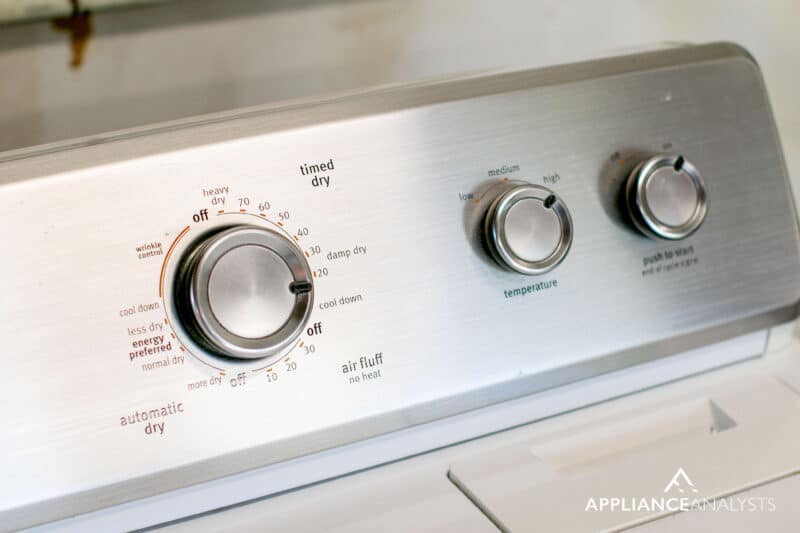
I’d recommend analyzing the list above carefully and crossing out the features/drying programs you know you don’t need. The more expensive models of every dryer type covered here will likely include several, if not all, whereas the lower-end alternatives might only have a couple.
#7 Noise Levels
Noise level is the last thing I’d like us to go over in this dryer buyer’s guide, as some people might be bothered by it, while others don’t really mind it.
If you’re in the latter group, feel free to move on to the next section, but if peace and quiet in your home are important to you, please keep reading below.
How quiet or loud a dryer is depends on many factors, including the area where it’s placed, the load it’s drying, and the quality of its internal components. Now, while it’s impossible to get a dryer that’s dead silent, there are some things you can look for to make the noise more manageable.
Before selling their products, most reputable companies put them to the test and measure the noise they make in dB (decibels), which is a standard unit for sound level. Ideally, you want a dryer that’s been certified to be under 65 dB, as anything below can be considered “quiet”.
The above information is rather easy to find by either Google searching the dryer’s make and model you’re interested in or checking the product tag on the store where you saw the unit.
Choosing Your Dryer
Having covered everything there is to know about dryers, how they work, and the essential things you should look out for, it’s time to answer the real question.
What dryer is right for you?
Well, there’s no cookie-cutter answer – it will vary greatly from one person’s situation to another. The information provided in this dryer buyer’s guide is meant to give you a general perspective of what different dryer types can do and whether the features they offer are something you need.
In most cases, a Standard capacity dryer with an Energy Star rating and 3-5 of the programs listed above should be more than enough for small and medium-sized households.
Frequently Asked Questions
How Long Should a Dryer Last?
It depends on several factors, including maintenance, manufacturer, user habits, and even weather conditions in a specific area. That said, if you take good care of your dryer and repair it as soon as something goes wrong, you should expect it to last anywhere between 10–13 years.
Are Electric Dryers Better Than Gas?
In terms of savings, no. While both variants will deliver great results and likely last long, electric models are a little more expensive to run. Not because they draw more power but because, at least in America, gas is cheaper than electricity.
How to Know if My Dryer Is Failing?
Well, there are many signs that could indicate a faulty internal component causing problems with your dryer. Some of the most common signs are a drum that’s vibrating too much, a distinctive burning smell, or even a sudden stop in the drying process mid-cycle.
If you suspect your appliance is failing for any reason, you must stop using it to prevent further damage and call your manufacturer for help if you’re still under warranty coverage.





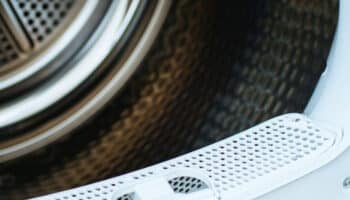
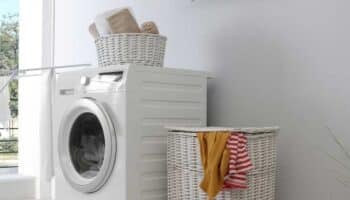
![LG Dryers: How to Change the Temperature [Easy Guide]](https://applianceanalysts.com/wp-content/uploads/2022/11/Featured-LG-Dryers-How-to-Change-the-Temperature-350x200.jpg)